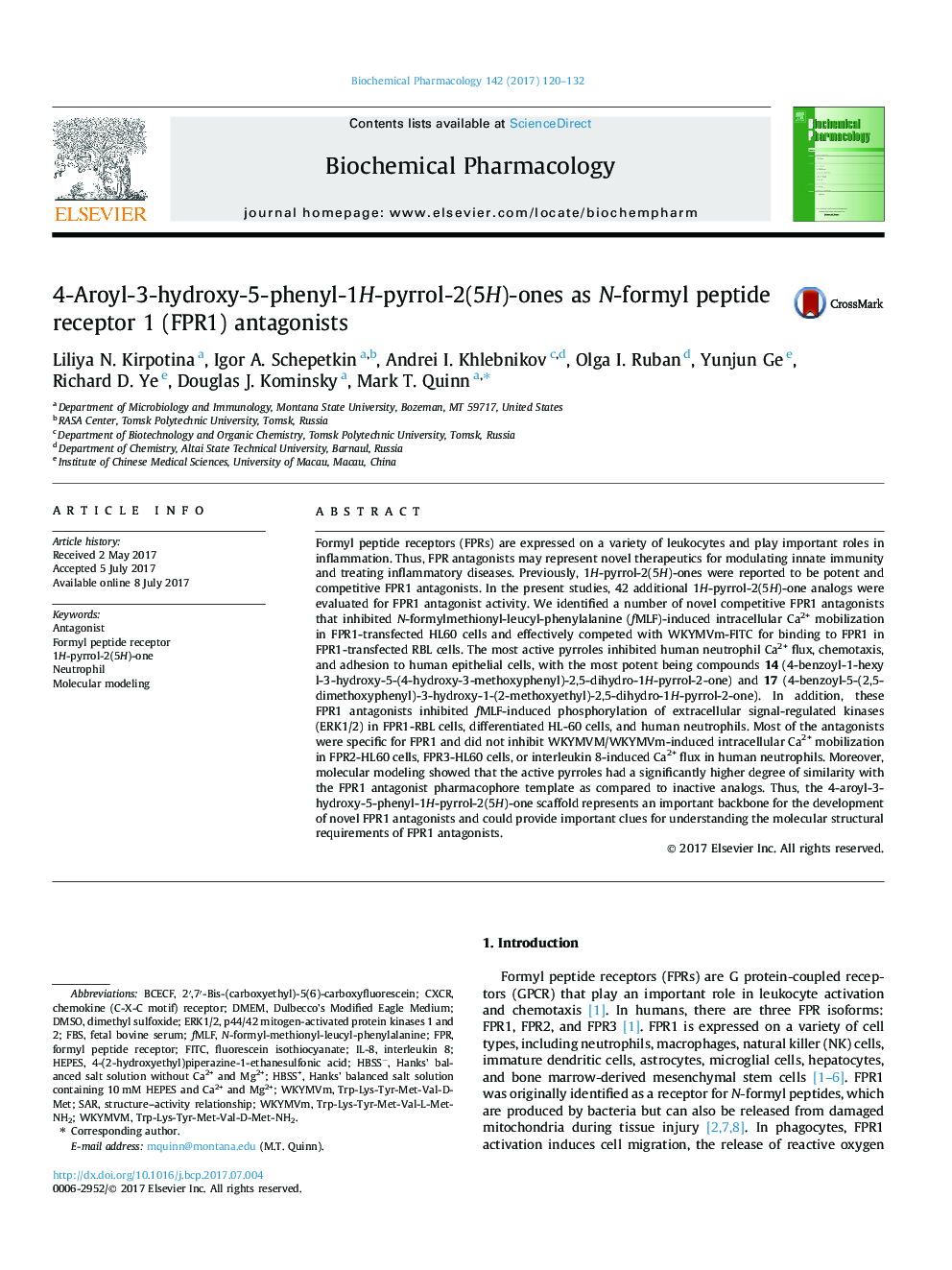| کد مقاله | کد نشریه | سال انتشار | مقاله انگلیسی | نسخه تمام متن |
|---|---|---|---|---|
| 5551989 | 1557871 | 2017 | 13 صفحه PDF | دانلود رایگان |

Formyl peptide receptors (FPRs) are expressed on a variety of leukocytes and play important roles in inflammation. Thus, FPR antagonists may represent novel therapeutics for modulating innate immunity and treating inflammatory diseases. Previously, 1H-pyrrol-2(5H)-ones were reported to be potent and competitive FPR1 antagonists. In the present studies, 42 additional 1H-pyrrol-2(5H)-one analogs were evaluated for FPR1 antagonist activity. We identified a number of novel competitive FPR1 antagonists that inhibited N-formylmethionyl-leucyl-phenylalanine (fMLF)-induced intracellular Ca2+ mobilization in FPR1-transfected HL60 cells and effectively competed with WKYMVm-FITC for binding to FPR1 in FPR1-transfected RBL cells. The most active pyrroles inhibited human neutrophil Ca2+ flux, chemotaxis, and adhesion to human epithelial cells, with the most potent being compounds 14 (4-benzoyl-1-hexyl-3-hydroxy-5-(4-hydroxy-3-methoxyphenyl)-2,5-dihydro-1H-pyrrol-2-one) and 17 (4-benzoyl-5-(2,5-dimethoxyphenyl)-3-hydroxy-1-(2-methoxyethyl)-2,5-dihydro-1H-pyrrol-2-one). In addition, these FPR1 antagonists inhibited fMLF-induced phosphorylation of extracellular signal-regulated kinases (ERK1/2) in FPR1-RBL cells, differentiated HL-60 cells, and human neutrophils. Most of the antagonists were specific for FPR1 and did not inhibit WKYMVM/WKYMVm-induced intracellular Ca2+ mobilization in FPR2-HL60 cells, FPR3-HL60 cells, or interleukin 8-induced Ca2+ flux in human neutrophils. Moreover, molecular modeling showed that the active pyrroles had a significantly higher degree of similarity with the FPR1 antagonist pharmacophore template as compared to inactive analogs. Thus, the 4-aroyl-3-hydroxy-5-phenyl-1H-pyrrol-2(5H)-one scaffold represents an important backbone for the development of novel FPR1 antagonists and could provide important clues for understanding the molecular structural requirements of FPR1 antagonists.
218
Journal: Biochemical Pharmacology - Volume 142, 15 October 2017, Pages 120-132